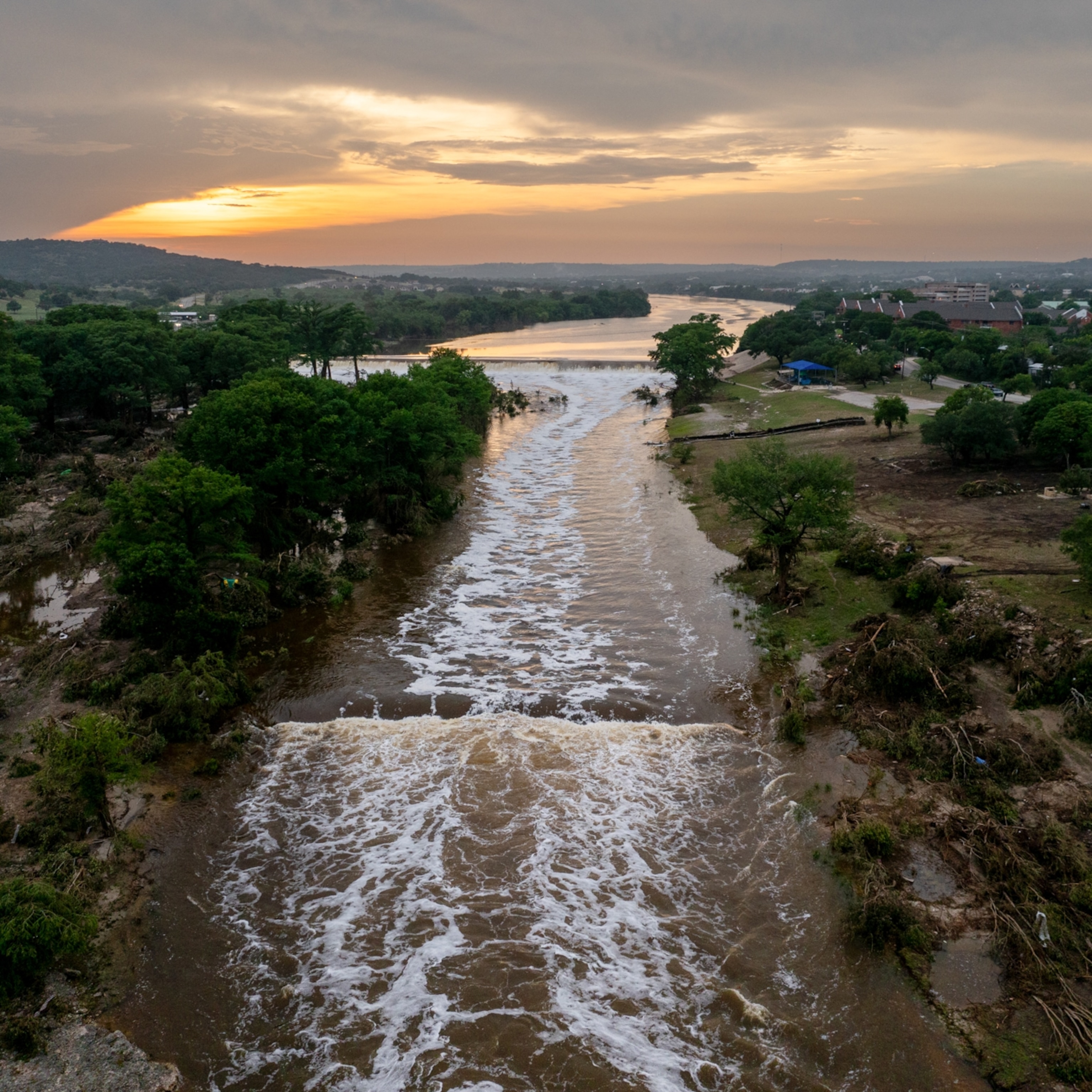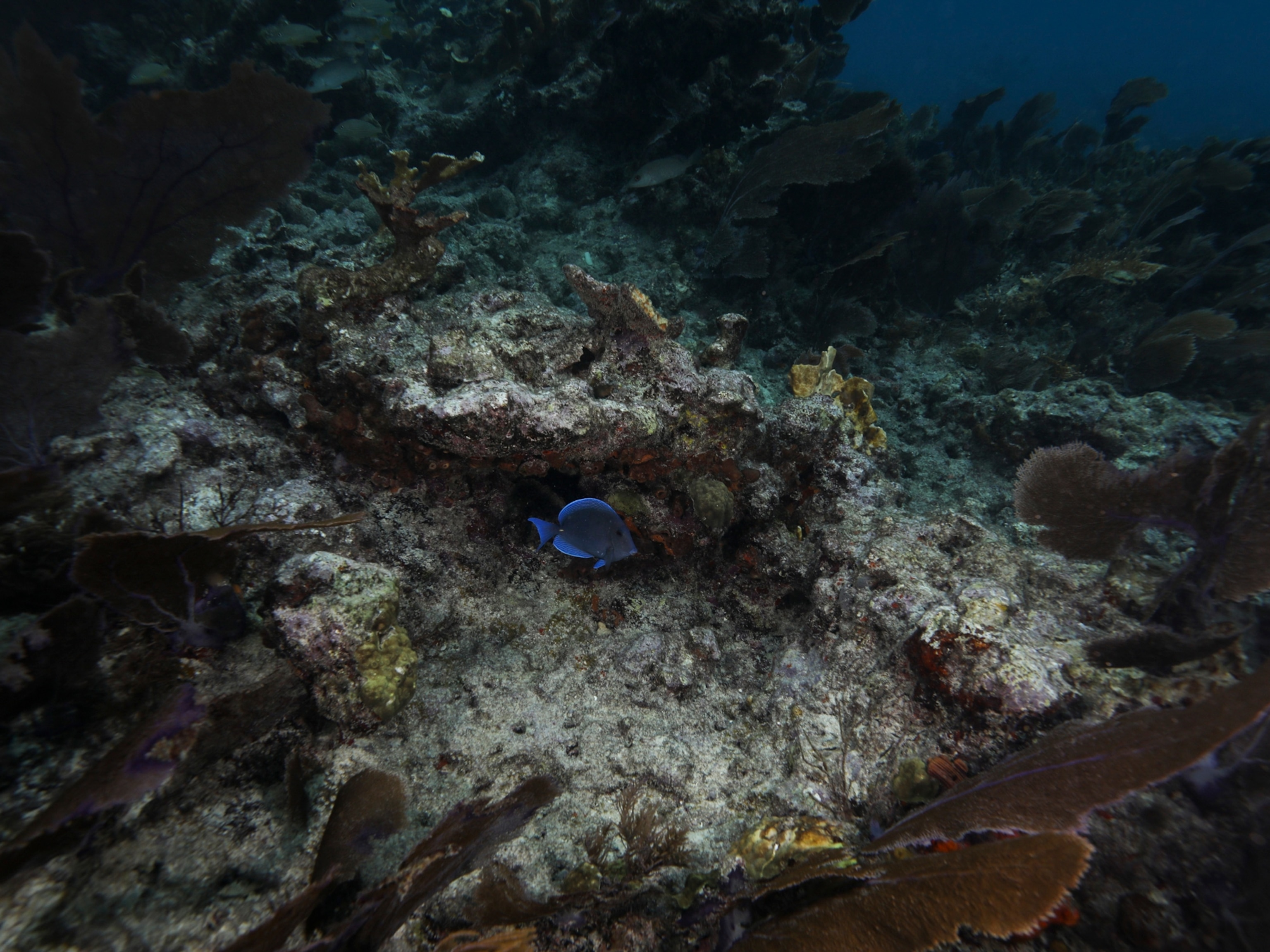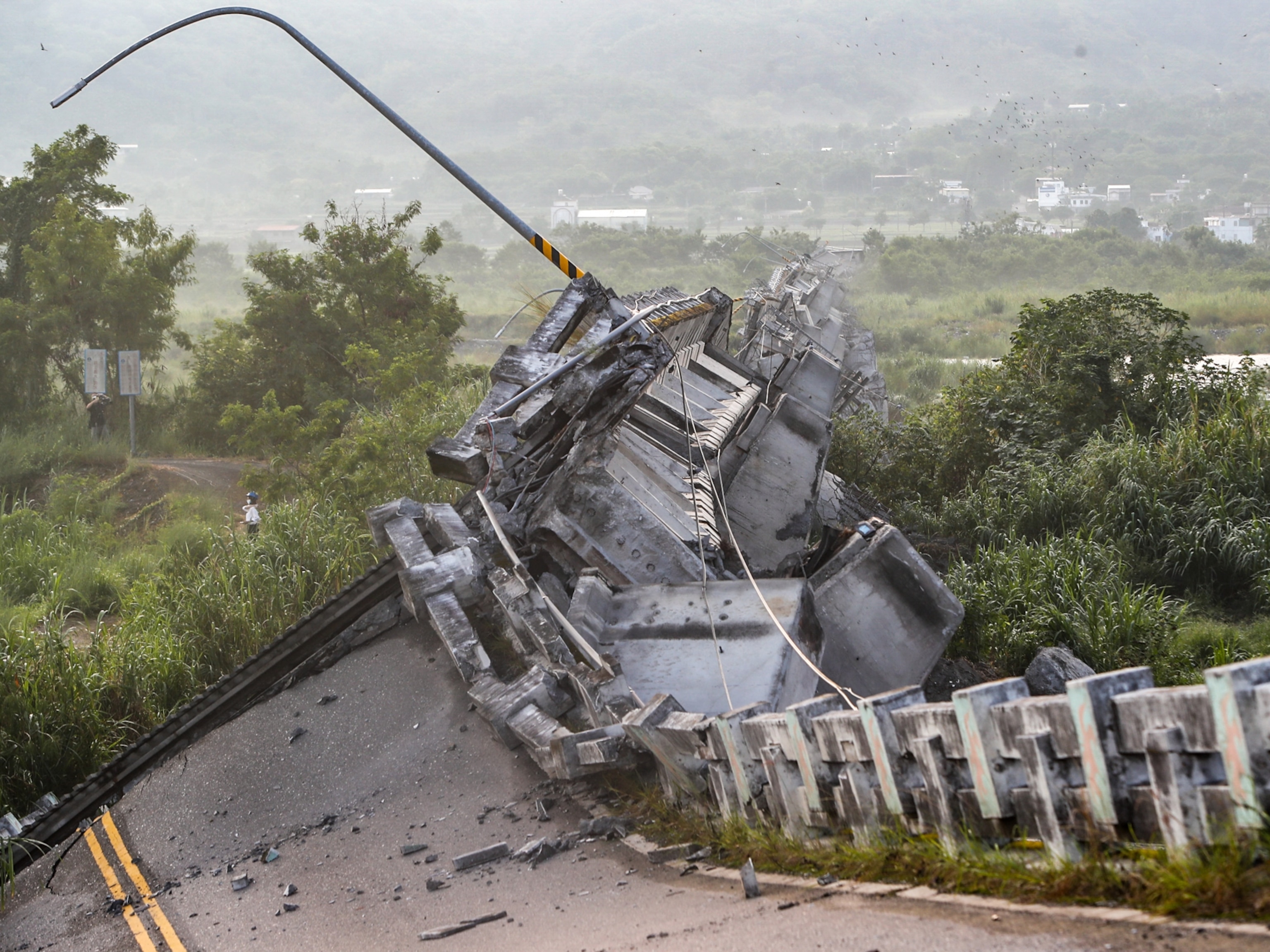
Their homes are sinking fast. Can their community survive?
As the north coast of Java, Indonesia, fades away, residents struggle to keep their town—and their history—from the same fate.
To bury Mukminah last year, they had to bring in the dirt by rowboat. The cemetery was underwater in Timbulsloko, a village some 250 miles east of Jakarta, the Indonesian capital. On maps the village looks like it’s still on the north coast of Central Java, but the land around it has lately been taken by the Java Sea. The cemetery, a few hundred yards outside the village, had been submerged even at low tide since 2020. There was a dead tree in the middle of it, surrounded by dozens of headstones sticking out of the water.
Mukminah was in her early 70s when she died. She would have remembered, as surviving elders do well, how green and prosperous their village once was. Paddy fields stretched as far as the eye could see. Villagers grew coconuts, red onions, chilies, cabbages, carrots, potatoes.
“Whatever seeds you threw to the ground, they would grow,” recalls Ashar, the village leader. He’s lean and muscular—and only 39—but he too remembers the better days. The water has come on fast in just the past two decades.


The north coast of Java is sinking, and the sea is rising. In Jakarta, a city of more than 10 million, as much as 40 percent of the land is below sea level. But Demak Regency, which includes Timbulsloko, is one of the hardest hit areas. While global warming is raising sea levels worldwide by around an eighth of an inch a year, the land here is sinking as much as four inches. Demak is losing more than a thousand acres, about half a percent of its area, each year.
In Timbulsloko, after rice crops failed in the 1990s, the villagers shifted to aquaculture, breeding milkfish and tiger prawns in brackish ponds. They had a few good years, but by the mid-2000s, the ponds too had been swamped. Now the “mainland” is more than a mile away, and the villagers travel there by rowboat. To stay dry in their houses, they’ve installed wooden decks or raised the floors as high as six feet. They bend over under the low ceilings of their “dwarf houses,” as they call them. Of more than 400 families that once lived here, about 170 are left.


The cemetery is one of the last things that connect them with their history.
Seven men were tasked to prepare the burial ground for Mukminah. They dug into the mud for about an hour, building a dike around the hole. Their hoes struck the bones of an earlier burial; they kept digging. Shirtless and soaked, they dug until the high tide filled the hole.
Mukminah was buried seven hours later, in the night, when the tide had ebbed and the water in the hole was only ankle-deep. She was buried under more than a ton of loose, light-brown soil that the men had rowed over from the mainland.

“You can’t bury the body with mud and water,” Ashar says. “So we have to buy fresh soil.
“It isn’t easy to live here, as you can see,” he goes on. Ashar can’t afford to leave, because nobody wants to buy his dwarf house in the sea. The elders don’t want to leave. They want to live with their memories, close to their ancestors.
After the funeral, the villagers pleaded with the Demak government for help. In the fall, it provided funding for a backhoe to scrape enough mud off the shallow seafloor to raise the whole cemetery five feet. That will buy the dead in Timbulsloko a little more time.
Demak Regency today has around 1.2 million inhabitants, a small fraction of Jakarta’s population. But in the late 15th century it was an independent Muslim sultanate that dominated the north coast. The Grand Mosque, built during that period as a center of Islamic teaching, still stands in the town of Demak. Thousands of pilgrims a year visit the tombs of the Wali Songo, or “nine saints,” who helped spread Islam on Java. Demak is known as the City of the Saints.
The North Coast Road, built in the 19th century along the length of Java by the Dutch colonial government, runs through Demak Regency. It’s still a major artery carrying some 400 trucks an hour. Factories lining the road produce everything from fertilizer and textiles to electronic devices. But tidal floods now repeatedly inundate it, at great cost.
There are several causes of the floods—and of the fact that Central Java has lost 20,000 acres of land, a lot of it in Demak. Sea-level rise due to global warming is one factor. But land subsidence is a greater one.

Java’s north coastal plain consists of dozens to hundreds of feet of alluvial sediment, deposited over millennia by rivers flowing from inland mountains. The sediment sinks as it compacts under its own weight, explains Aron Meltzner, a geologist at the Earth Observatory of Singapore at Nanyang Technological University.
“This is a very natural process,” Meltzner says. “But because the river is bringing more sediment, as the existing sediment compacts, more mud gets built on top and the delta stays above water.” At least that’s what used to happen: As the rivers jumped their banks during annual floods, and as their channels migrated back and forth through the soft mud, they spread sediment evenly across the plain.
The flooding, however, threatened modern cities. In the late 19th century, the Dutch built canals, levees, and sluice gates as flood controls in the major cities, especially Jakarta and Semarang, the capital of Central Java. Today the levees and concrete embankments keep the rivers from flooding—but also prevent them from replenishing the plain. Instead, sediment falls to the riverbed or shoots straight out to sea. That’s one reason the north coast is sinking.
“Even in the absence of sea-level rise, just the fact that we channelized the rivers and prevented them from migrating means that the natural process has been interrupted,” Meltzner says.


Heri Andreas, a researcher at the Bandung Institute of Technology who studies the sinking coast, says another factor is at work: massive groundwater extraction, which is causing the sediments to compact faster.
In Demak Regency alone, as of 2014, there were almost 250,000 wells, some up to 650 feet deep, in an area the size of Berlin. There probably are more wells by now; 2014 is the latest year for which government data are available. Most are private, but the Demak water authority has also drilled a dozen deep wells. It uses them to supplement river water and provide tap water to more than 61,000 households in 59 villages, out of 249 in the regency. In 2019 it distributed at least 9.1 million cubic meters of groundwater.

For more than a decade, researchers say, the local government has promoted groundwater as the cheapest way to meet the pressing demand for drinking water and sanitation. It’s clean and requires no treatment plants, dams, or reservoirs. But using it here exacts a high price.
“People, especially the government, keep blaming sea-level rise as the main cause” of the loss of land in Demak, Andreas says. “But our conclusion is that the main culprit turns out to be decades of groundwater exploitation.”
Demak’s public water network still serves only a minority of the regency’s population, and it doesn’t reach Sayung District (which includes Timbulsloko), where the worst subsidence is taking place. In the village of Sayung, residents have drilled more than a dozen deep wells to supply about 2,000 families. The water is stored in elevated tanks and costs around 20 cents per cubic meter, cheaper than the public network.


“It’s been a good business, with good profit,” says Munawir, the 41-year-old village leader, who spends about $13 a month himself for water service. The 49-foot-deep well his father drilled in his backyard in the 1980s is unusable now, contaminated by seawater.
“Of course we hope that the government can provide a tap water network to prevent the sinking” of the land, Munawir says. “But it will also kill the already established local water business.”
The local government says drilling deep wells requires official permits and that unregistered wells will be shut down. But it hasn’t closed any in recent years. Qomarul Huda, head of the Demak water authority, blamed water shortages in the regency on farmers who draw too much from rivers for irrigation. He declined to comment on groundwater extraction.


As Demak’s population and industry continue to grow, groundwater extraction will too. No one is willing or able to invest the immense sums needed to build an alternative.
For a decade, the Central Java provincial government and nongovernmental organizations have been struggling to protect the coast from erosion. The government claims to have planted in excess of three million mangroves on more than 900 acres since 2011, to buffer waves and tides. The plan is to double that by 2023.
Meanwhile, environmental NGOs working with local fisherfolk in Sayung District have built miles of bamboo fences just offshore. The fences act as permeable breakwaters that trap sediment stirred up by waves, especially during monsoon storms. They’re cheap and meant to be temporary—the idea is to trap just enough sediment for mangroves to take root—but they collapse easily and often have to be repaired.
“We have yet to feel the impact of this coastal engineering,” says Fadholi, a 36-year-old fisherman hired by an NGO to maintain a sediment trap in the village of Bedono. “We haven’t seen sediment build up here because the current keeps washing it away.” The fences do act as breeding grounds for mussels, however, which residents collect and sell.
Researchers at Diponegoro University in Semarang have tested other methods of coastal protection. At Timbulsloko in 2012 they built a seawall of concrete cylinders along 500 feet of former coastline. Within two years, enough sediment had built up behind the wall to grow mangroves—which today stand up to 10 feet tall.
But concrete is too expensive to be a large-scale solution, says Denny Nugroho Sugianto, an oceanography professor at Diponegoro. Where waves are low enough, he advocates permeable breakwaters of bamboo and PVC pipe, more durable than bamboo and still cheap.

But, he adds, “we haven’t solved the problem of sinking land. So no matter how many breakwaters we build, they won’t be successful.”
The national government, as part of a strategic effort to save vital assets and industrial zones, is building a combined highway and seawall from Semarang to the town of Demak, a distance of 17 miles. It’s expected to be finished in 2024 at a cost of $532 million. But only small parts of two villages will be protected. The move angers residents of villages outside the wall, such as Timbulsloko and Sayung, who feel their communities are being left to drown.
Central Java governor Ganjar Pranowo, a tall 53-year-old with graying hair and a boyish smile, acknowledges the plan’s limitations. He says the government simply can’t afford to build bigger seawalls, as in the Netherlands, to protect more of the coast. Huge pumping stations would be needed to evacuate floodwaters from behind the wall. The system would require maintenance indefinitely. The government doesn’t have the money, Pranowo says.

So what should people do in the flooding villages, the ones accessible only at low tide along narrow footpaths, the ones where water laps at the villagers’ feet in their living rooms?
“The last resort is to relocate to a safer place,” says Pranowo, who’s expected to run for president of Indonesia in 2024. “Or if they insist on living there, they have to adapt to the environment by building stilt houses, for example. If they want their land back just like the old times, it’s impossible. It’s drowned now.”
In Central Java the Muslim tradition is to visit the cemetery in the late afternoon on Thursdays. One recent Thursday Khusnumarom, a 16-year-old high school student, made his way to the cemetery in Timbulsloko.

Dressed in a traditional white shirt, black songkok cap, and dark gray trousers, he walked barefoot on a narrow, six-foot-high boardwalk, nearly two miles long, that residents built last year to replace the vanished roads. He made a right turn down wooden stairs and crossed a creek on the slippery, submerged road. The tidal flood reached knee-deep, but his steps were confident. On the other side he climbed back onto the boardwalk and continued on.
When he reached the underwater cemetery, the shadows had begun to fall. The dead tree and the headstones were silhouetted against the deep-orange sky. Khusnumarom found the grave of his grandmother, Mukminah. He raised his hands and began to pray.
Khusnumarom knows from bedtime stories, including the ones Mukminah told him, how his village used to be. The memories will die with the older generation, and sooner or later the stories too will fade. Like many other youths, Khusnumarom doesn’t plan to stay in Timbulsloko.
“I know what this village looked like,” he says. “But we see and experience what it has now become.” He’ll look for a job in the city when he graduates. He wants to be a software engineer.
Indonesian multimedia journalist Adi Renaldi writes for publications around the world. Photographer Aji Styawan lives just a few miles from the flood-prone villages he shot for this article.
This story appears in the July 2022 issue of National Geographic magazine.















